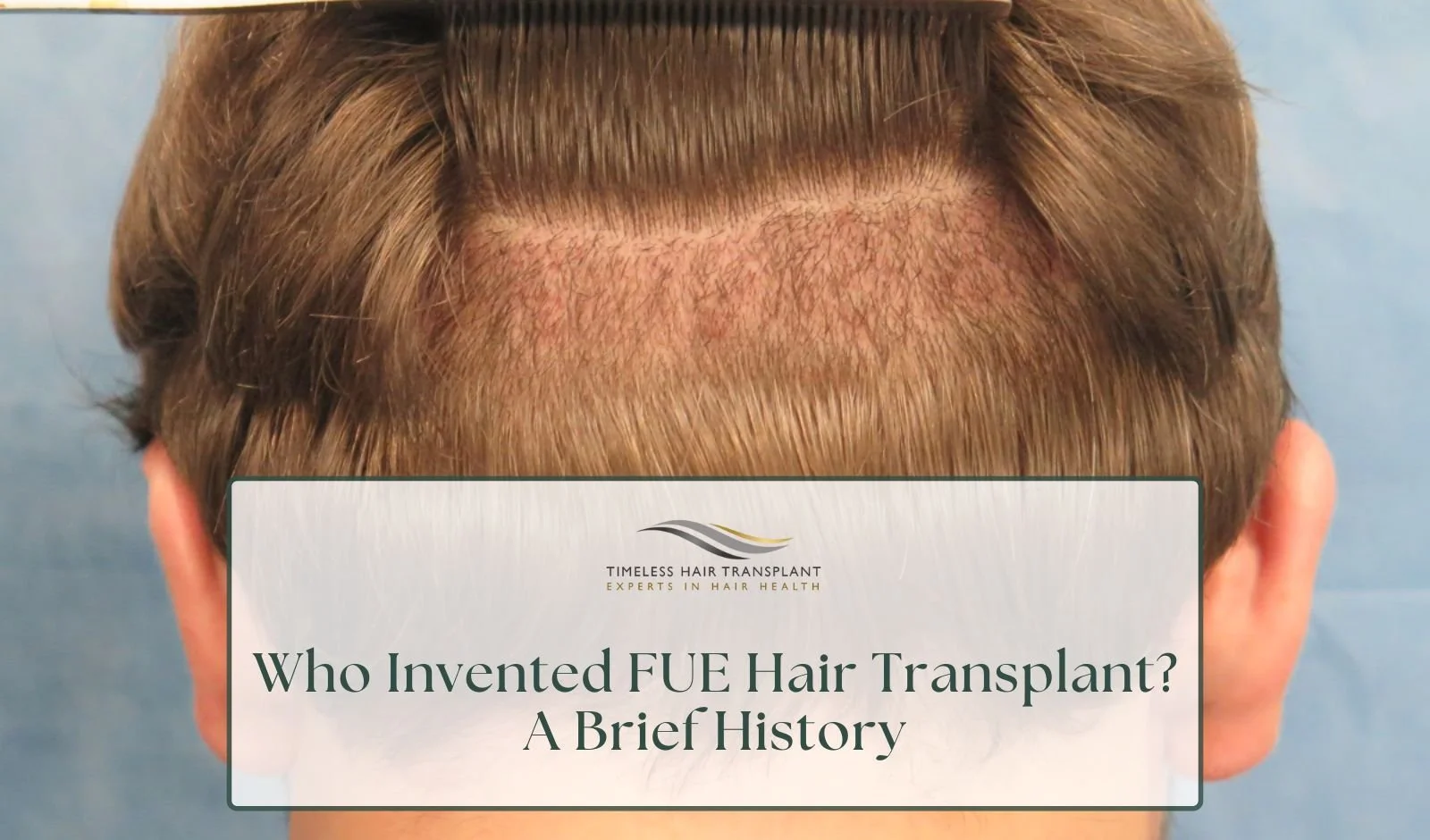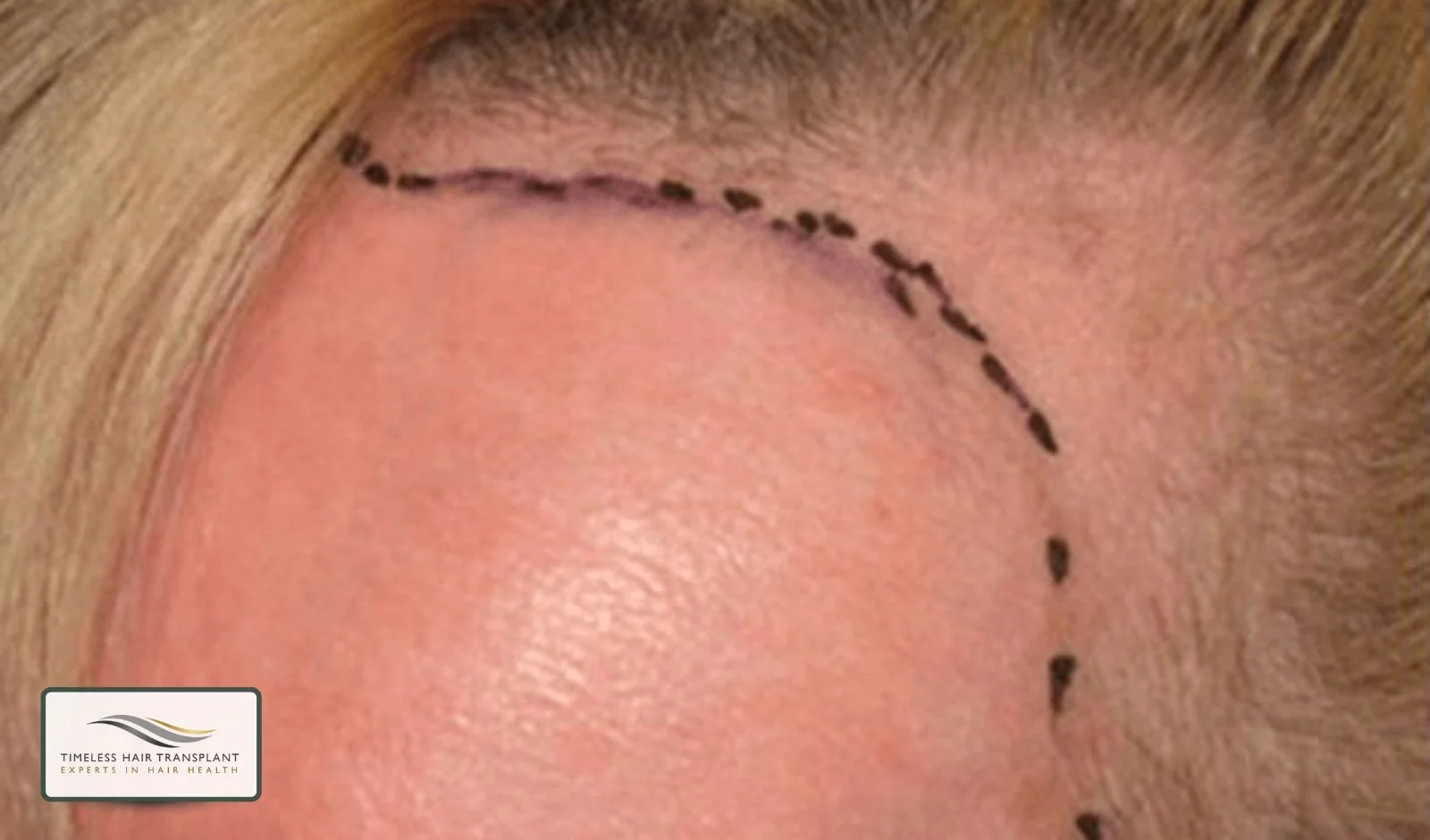Who Invented FUE Hair Transplant? A Brief History
The FUE hair transplant is one of the most in-demand methods for restoring hair today. Known for its natural-looking results, minimal scarring, and quick recovery, it has changed how people address hair loss, especially for those looking to treat male pattern baldness.
But this advanced hair transplant procedure didn’t just appear overnight. It’s the product of decades of medical innovation, starting with early breakthroughs in modern hair transplantation and evolving into today’s refined follicular unit extraction (FUE) methods.
So, who invented the FUE hair transplant, and how did we get here? Let’s go back in time to understand its roots.
The Foundations of Modern Hair Transplantation
While FUE is a relatively recent innovation, the foundation of surgical hair restoration began in the mid-20th century.
In 1952, a New York dermatologist named Dr. Norman Orentreich performed the first successful hair transplant surgery to treat male pattern baldness. His experiments in the early 1950s proved the concept of donor dominance, the principle that hair taken from the donor area (usually the back or sides of the scalp) retains its growth characteristics even when moved to a bald area.
This was a game-changer. Until then, there was no reliable way to restore hair permanently. Dr. Orentreich’s work during the post-World War II era gave birth to the entire field of modern hair transplantation.
Early Hair Transplant Techniques
The first techniques used by hair transplant surgeons involved larger “punch grafts” that contained multiple follicular units. While these restored hair, they often produced a “pluggy” look because of the size of the grafts.
Over time, surgeons began experimenting with smaller grafts to create a more natural hairline. This evolution eventually led to follicular unit transplantation (FUT), also called the strip excision method, which became the gold standard for many years.
FUT involves removing a strip of skin from the donor area, dissecting it under a microscope into individual follicular units, and implanting them into the thinning or bald areas. While effective, FUT leaves a linear scar in the donor area, which some patients want to avoid.
The Birth of Follicular Unit Extraction (FUE)
The concept of removing individual follicular units without a strip of skin was first described in the late 1980s by Japanese dermatologist Dr. Masumi Inaba, who used a small punch tool to extract hair follicles directly.
However, the modern FUE hair transplant technique as we know it was pioneered in 2002 by Australian physician Dr. Ray Woods (with his sister, Dr. Angela Campbell). They refined the process to make it practical for larger-scale procedures, allowing surgeons to extract and implant thousands of follicles with minimal scarring.
Unlike FUT, follicular unit extraction (FUE) doesn’t require stitches or leave a long scar. Instead, tiny circular incisions are made around each follicle in the donor area, and the grafts are implanted into the bald area.
How FUE Revolutionized Hair Restoration
The shift from strip excision to FUE represented a major leap forward in hair restoration surgery. Here’s why:
Minimal Scarring - The small extraction sites heal quickly and are barely noticeable.
Faster Recovery - Patients can often return to normal activities within days.
Natural Results - Precise placement of grafts improves the look of the hairline.
Flexibility - Suitable for small touch-up sessions or larger coverage areas.
No Stitches - Reduces discomfort and post-op restrictions.
For patients concerned about wearing short hair, avoiding a linear scar, or experiencing less downtime, FUE became the preferred option over FUT.
The Role of Technology in Advancing FUE
In its early days, FUE was slower and more labor-intensive compared to FUT. Extracting each follicle by hand required skill, patience, and magnification tools. But innovations in hair transplant techniques have made the process more efficient:
Motorized punch tools speed up extraction while maintaining graft quality.
Robotic systems assist with precise harvesting.
Better graft storage methods improve survival rates of transplanted hair follicles.
Today, skilled hair transplant surgeons can perform mega-sessions of 2,000-4,000 grafts in a single day, producing results that rival or surpass FUT.
Comparing FUT and FUE Today
While FUE dominates today’s market, follicular unit transplantation (FUT) is still used, especially when a large number of grafts is needed in one session or when maximizing donor hair is a priority.
Here’s a quick comparison:
| Feature | FUT (Strip Excision) | FUE (Follicular Unit Extraction) |
|---|---|---|
| Scarring | Linear scar | Small dot scars |
| Recovery | 10-14 days | 5-7 days |
| Pain Level | Slightly more post-op discomfort | Minimal discomfort |
| Graft Numbers | High in one session | Flexible, but may require multiple sessions |
| Best For | Large areas of baldness | Patients avoiding visible scars |
Ultimately, the choice depends on the patient’s goals, donor area quality, and the surgeon’s recommendation.
Why Understanding FUE’s History Matters
Knowing the origins of FUE hair transplant gives patients perspective on how far the industry has come, from the large plug grafts of the 1950s to today’s microscopic precision.
It also shows the importance of selecting an experienced clinic. While the tools and techniques have improved, hair transplant surgery still requires an artistic eye, steady hands, and a deep understanding of hair follicles and growth patterns.
A well-executed FUE can produce life-changing results. But when performed by inexperienced surgeons, it can lead to uneven density, failed hair, or unnatural hairlines.
Is FUE Right for You?
You may be a good candidate for follicular unit extraction (FUE) if you:
Have thinning areas or localized bald spots
Have a healthy donor area with strong hair follicles
Prefer minimal downtime after surgical hair restoration
Want to avoid a linear scar from strip excision
Need a touch-up to blend with previous FUT hair transplants
During your consultation, your surgeon will also explain possible side effects, the use of local anaesthetics, and realistic expectations for hair transplant results.
The Future of Hair Transplant Techniques
As technology advances, we can expect further improvements in hair transplant techniques, including:
Better automation for graft extraction and placement
Higher survival rates for smaller grafts
Enhanced precision for creating natural hairlines
Integration with regenerative treatments like PRP or stem cell therapy
The pioneering work of Dr. Norman Orentreich, Dr. Masumi Inaba, and Dr. Ray Woods laid the foundation for these ongoing innovations.
Why Choose Timeless Hair Transplant?
At Timeless Hair Transplant, your care is led by Dr. Luciano Sciacca, an expert in modern hair restoration. With years of experience in both FUE and FUT, he combines surgical precision with artistic detail to create results that look natural and stand the test of time.
What makes us different is more than just advanced techniques—it’s the complete support you receive before, during, and after surgery. From honest consultations to clear aftercare guidance, Dr. Luciano and our team are committed to making your journey safe, comfortable, and life-changing.
Call +44 (0) 7516294471 today to book your free consultation and take the first step toward restoring your confidence.
Frequently Asked Questions
-
FUE stands for Follicular Unit Extraction, a modern technique where individual hair follicles are harvested and transplanted to thinning or balding areas.
-
The earliest concept of FUE came from Dr. Masumi Inaba in Japan. Later, Dr. Ray Woods and other surgeons helped refine and popularise the method globally.
-
Unlike Follicular Unit Transplantation (FUT), which removes a strip of scalp, FUE extracts follicles one by one. This makes scarring less visible and recovery faster.
-
Patients preferred FUE because it’s less invasive, leaves no linear scar, and works well even for those who want to keep short hairstyles.
-
For many patients, yes. FUE is now the most requested method worldwide because it combines precision, natural results, and quicker healing. However, the best option still depends on your goals, donor area, and your surgeon’s recommendation.





